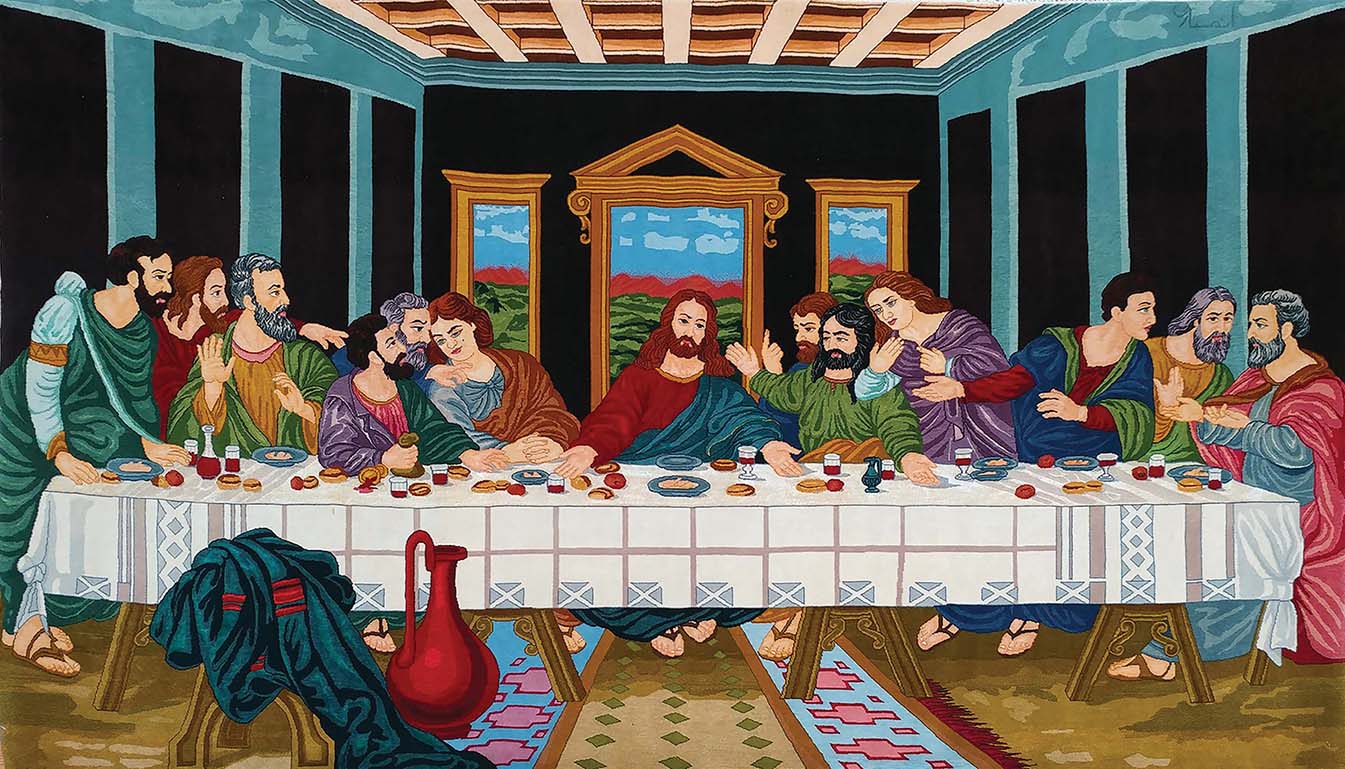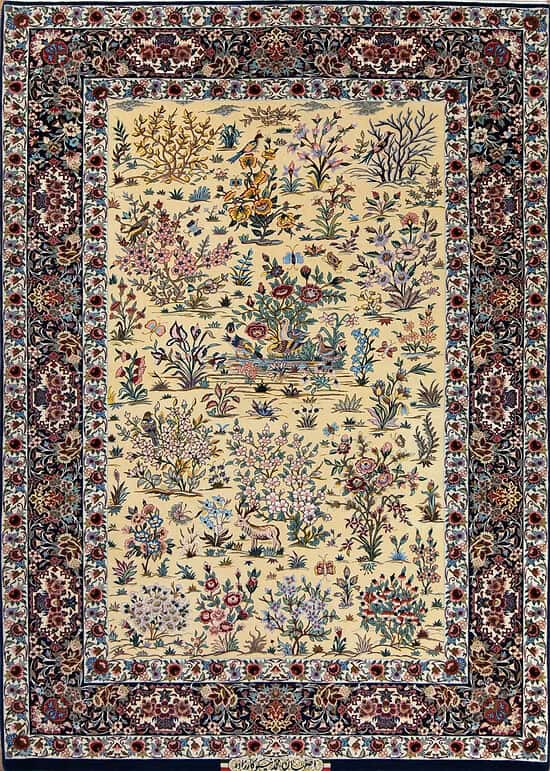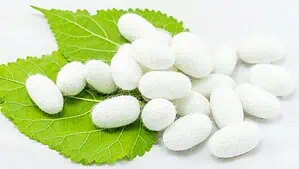
Welcome to Beautiful Rugs, a premier rug store nestled in the heart of Chicago. Our passion lies in curating an exquisite collection of Persian rugs and Oriental rugs that are not just adornments for your floors but true works of art. Among these stunning creations, one material stands out for its captivating allure: silk.
Silk has been intertwined with the world of rugs for centuries, lending its lustrous elegance and undeniable charm to these masterpieces. Its significance in Persian and Oriental rugs is undeniable, as it adds a touch of opulence, sophistication, and enduring beauty that is unmatched by any other fiber.
From the grand palaces of ancient Persia to the tranquil courtyards of the Far East, silk has played a pivotal role in creating rugs that evoke awe and admiration. It’s natural sheen and smooth texture bring a sense of luxury and refinement to every thread. The intricate designs and patterns that grace silk rugs are elevated to another level, shimmering under the light and captivating the eye with their mesmerizing detail. Join us on a journey as we peel back the layers of time and unravel the allure of silk within these magnificent rugs.
What is Silk?

Silk, a luxurious and prized material, has a rich history and holds a special place in the world of textiles. Derived from the silkworm’s cocoon, silk has been cherished for centuries for its natural beauty, elegance, and remarkable durability.
Dating back to ancient China, silk production was a closely guarded secret for many years. The Chinese held a monopoly on silk production, making it a highly sought-after commodity that symbolized wealth, status, and even power. It became a valuable trade item along the Silk Road, connecting the East to the West and introducing the wonders of silk to different cultures.
As a natural fiber, silk possesses unique characteristics that set it apart from other materials. Its smooth, soft texture caresses the skin, creating a sensation of indulgence and comfort. The lustrous sheen of silk adds a touch of opulence, reflecting light in a way that captivates the eye. This radiant quality imbues silk rugs with an ethereal beauty, enhancing the intricate designs and patterns that adorn them.
Beyond its visual appeal, silk is known for its exceptional strength and durability. Despite its delicate appearance, silk fibers are surprisingly robust and capable of withstanding the test of time. This longevity ensures that silk rugs maintain their allure for generations, becoming cherished heirlooms that can be passed down from one family member to another.
Silk’s connection to beauty, elegance, and durability makes it a perfect choice for Persian and Oriental rugs. It elevates these rugs to a level of luxury that is unmatched by any other fiber. Each silk rug exudes a sense of grandeur and sophistication, inviting admiration and transforming any space into a sanctuary of refinement.
Production Process of Silk
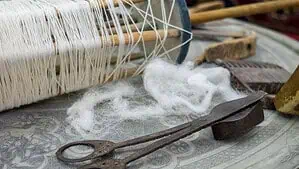
The production of silk is a meticulous process that involves the cultivation and harvesting of silkworms, the extraction of silk thread from their cocoons, and the transformation of this thread into the luxurious fabric we know and love.
a. The Lifecycle of Silkworms
It all begins with the humble silkworm, scientifically known as Bombyx Mori. These small caterpillars are reared on mulberry leaves, their sole source of food. Silkworms undergo a remarkable metamorphosis, transitioning through several stages of growth before entering the cocoon-spinning phase. During this period, which lasts about two weeks, the silkworms continuously feed on mulberry leaves and produce silk proteins within their bodies.
When the time comes, the silkworms begin the process of cocoon spinning. They secrete a viscous fluid called sericin, which solidifies upon contact with air, forming a protective covering around their bodies. This cocoon, made entirely of silk thread, serves as the silkworm’s shelter during its transformation into a moth.
To obtain the silk thread, the cocoons are carefully harvested before the silkworms can break through and emerge as moths. Traditional methods involve boiling the cocoons in hot water to dissolve the sericin and loosen the silk fibers. The extracted silk threads are then unwound from the cocoons and twisted together to form a single, continuous filament.
b. Traditional Methods and Modern Techniques in Silk Production
Modern techniques have also emerged to streamline the silk production process. Some methods involve using steam or hot air to soften the cocoon, making it easier to extract the silk thread without killing the silkworm inside. This approach, known as non-violent silk production or peace silk, allows for the ethical harvesting of silk while preserving the lives of the silkworms.
Once the silk thread has been extracted, it is carefully cleaned, sorted, and spun into yarn. This yarn is then woven into fabric, which can be further treated and dyed to achieve desired colors and textures. The craftsmanship and attention to detail that go into every step of the silk production process ensure that each piece of silk fabric is of the highest quality.
Silk production is a labor-intensive art form that combines ancient traditions with modern innovations. It is a testament to human ingenuity and dedication, as well as a celebration of the extraordinary natural fibers created by silkworms. As you run your fingers across a silk rug or drape yourself in a silk garment, remember the intricate journey that brought this luxurious fabric to life.
Grades of Silk
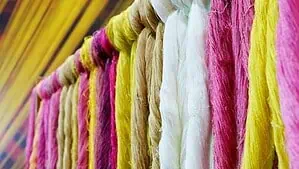
Silk is a highly prized fabric known for its luxury, beauty, and durability. In the rug industry, silk plays a crucial role in creating exquisite and high-quality rugs. The grading system for silk helps classify and determine the quality of this precious material.
Silk grades serve as a benchmark for evaluating the quality and value of silk. They provide buyers and manufacturers with useful information about the characteristics and performance of the silk they are working with.
Criteria for Assessing Silk Quality
The grading system takes into account various factors, including fiber length, purity, and overall silk production methods.
i. Fiber Length
The length of silk fibers plays a significant role in determining its quality. Longer fibers are generally considered more desirable as they result in smoother and more lustrous fabrics. Silk with longer fiber lengths tends to have fewer interruptions in the thread, resulting in stronger and more durable textiles.
ii. Purity
The purity of silk refers to the absence of any other fibers or contaminants mixed with the silk fibers. High-purity silk is valued for its ability to absorb dyes evenly and create vibrant and long-lasting colors. To ensure purity, rigorous processing and manufacturing techniques are employed to remove any impurities.
iii. Production Methods
The methods used in silk production also affect its quality. Traditional, labor-intensive methods, such as hand-rearing silkworms and hand-spinning silk threads, often result in higher-quality silk. On the other hand, machine-spun silk may be more cost-effective but may not possess the same level of refinement and luxury.
Grades of Silk and Their Characteristics
Silk grades are typically categorized into three main categories: A, B, and C. Each grade has its own distinct characteristics:
i. Grade A Silk
Grade A silk represents the highest quality and is often referred to as “mulberry silk.” This type of silk is made from the cocoons of silkworms fed exclusively on mulberry leaves. Grade A silk has long fibers, a smooth texture, and a natural luster. It is highly sought after for its exceptional strength, durability, and ability to absorb dyes beautifully.
ii. Grade B Silk
Grade B silk is considered a mid-range option in terms of quality. It may have slightly shorter fibers compared to Grade A silk, but it still possesses good strength and a lustrous appearance. Grade B silk is often used in a wide range of silk products, including rugs, due to its favorable combination of quality and affordability.
iii. Grade C Silk
Grade C silk represents the lower end of the quality spectrum. It may have shorter and coarser fibers compared to higher-grade silk. While Grade C silk may have some limitations in terms of smoothness and luster, it can still be suitable for certain applications where cost is a primary concern.
Understanding the different grades of silk empowers buyers to make informed decisions based on their specific requirements and budget. Whether it’s the luxurious Grade A silk or the more affordable Grade B or C options, silk rugs and textiles continue to captivate with their beauty and elegance.
Keep in mind that while this grading system is commonly used, different regions or manufacturers may have their own variations. It’s always important to consider the specific grading standards and reputation of the source when assessing the quality of silk.
Silk in Persian and Oriental Rugs
Persian and Oriental rugs are renowned worldwide for their exquisite designs, meticulous weaving techniques, and cultural heritage. Persian silk rugs originate from Iran, while Oriental rugs encompass a broader range of rug-producing regions, including countries like Turkey, India, China, and Afghanistan. These rugs have long been valued as cherished possessions, symbols of wealth and status, and expressions of artistic tradition.
Silk is often integrated into Persian and Oriental rugs, either fully or partially, to enhance their beauty and value. In some cases, entire rugs are crafted from pure silk, showcasing its inherent luster and delicate texture. Alternatively, silk can be combined with other natural fibers, such as wool or cotton, creating a blend that balances both strength and luxury.
The inclusion of silk in Persian and Oriental rugs contributes several distinct qualities that set them apart:
i. Sheen and Luster
Silk’s natural sheen and luster impart a radiant quality to the rugs. As light interacts with the silk fibers, it creates a mesmerizing play of reflections, giving the rug a vibrant and dynamic appearance. This luminosity adds depth and richness to the intricate patterns and motifs woven into the fabric.
ii. Intricate Detailing
Silk’s fine and smooth texture allows for incredibly detailed designs to be woven into the rug. Silk fibers can be tightly and precisely knotted, enabling weavers to create intricate patterns with incredible precision. From delicate floral motifs to intricate geometric shapes, silk brings a level of intricacy and refinement that is unparalleled.
iii. Durability and Strength
Despite its delicate appearance, silk possesses remarkable strength and durability. When combined with other natural fibers like wool, the resulting blend ensures that the rug can withstand everyday wear and maintain its beauty over time. The strength of silk allows for the creation of rugs that can be treasured and passed down through generations.
In essence, the integration of silk in Persian and Oriental rugs elevates their aesthetic appeal and adds a touch of opulence. These rugs continue to captivate collectors and enthusiasts worldwide, serving as timeless works of art and cultural treasures.
Most Used Types of Silk

The most commonly used types of silk in rug making include traditional silk, bamboo silk, viscose silk, and art silk. Each type has its own unique qualities, strengths, and limitations.
i. Traditional Silk
Traditional silk is made from the cocoons of silkworms raised in captivity. It is considered a luxury material and is known for its lustrous sheen and fine texture. Traditional silk rugs are highly valued for their intricate designs and exquisite craftsmanship. One example of a famous rug showcasing traditional silk is the Persian Isfahan rug.
ii. Bamboo Silk
Bamboo silk is an eco-friendly alternative to traditional silk. It is made from natural bamboo fibers and shares many characteristics with traditional silk in terms of look and feel. Bamboo silk rugs offer a luxurious appearance and are often more affordable than traditional silk rugs. An example of a famous rug that showcases bamboo silk is the contemporary rugs from India.
iii. Viscose Silk
Viscose silk, also known as rayon or art silk, is a synthetic fiber made from cellulose. It is often used as a substitute for traditional silk due to its similar appearance and texture. Viscose silk rugs can have a shiny finish and can be more affordable compared to traditional silk rugs. However, they may not possess the same level of durability and longevity. Examples of famous rugs that showcase viscose silk include some Kashmir rugs from India.
iv. Art Silk
Art silk is another term for artificial silk, which can refer to various synthetic fibers used to mimic the appearance of silk. These fibers can include viscose, polyester, or nylon. Art silk rugs can offer a similar look to traditional silk rugs at a lower cost. However, they may lack the same level of durability and natural luster. It is important to note that art silk rugs should be properly labeled to avoid confusion with genuine silk rugs.
It’s worth mentioning that famous rugs that showcase these types of silk can vary widely, as silk is often used in combination with other materials, like wool or cotton, to create unique designs and textures. Examples of famous rugs include the Persian Isfahan Rug (traditional silk), the Ghom rug (traditional silk), and some Indian-made rugs (viscose silk).
Maintaining Silk Rugs
Proper care and maintenance are crucial for preserving the beauty and longevity of silk rugs. Here are some important tips and guidelines to follow when caring for your silk rug:
a. Regular Cleaning
- Vacuum the silk rug frequently using a low-power setting to remove loose dirt and debris.
- Be gentle around the edges and fringes to avoid damage.
- Avoid using a beater bar or brush attachment, as it may pull or snag the delicate silk fibers.
b. Spot Cleaning
- Immediately attend to spills and stains to prevent them from setting into the rug.
- Blot the affected area with a clean, white cloth or paper towel to absorb as much liquid as possible.
- Avoid rubbing or scrubbing, as this can spread the stain and damage the silk fibers.
- Use a mild detergent or a specialized silk rug cleaner diluted with water, following the manufacturer’s instructions.
- Test any cleaning solution on an inconspicuous area of the rug before applying it to the stain.
c. Avoid Direct Sunlight
- Protect the silk rug from prolonged exposure to direct sunlight, as it can cause fading and discoloration.
- Use window treatments or UV-blocking window film to minimize the rug’s exposure to harmful UV rays.
d. Rotate and Move Furniture
- Periodically rotate the silk rug to ensure even wear and prevent excessive fading in high-traffic areas.
- Lift heavy furniture instead of dragging it across the rug to avoid damaging the delicate silk fibers.
e. Professional Rug Cleaning
- It is recommended to have your silk rug professionally cleaned every 3-5 years, depending on usage and soiling.
- Professional cleaners have the expertise and specialized equipment to effectively and safely clean silk rugs.
- Ensure that the cleaning service you choose has experience in handling silk rugs and uses appropriate cleaning methods.
f. Proper Storage
- If you need to store the silk rug, ensure it is clean and completely dry before rolling it up for storage.
- Use acid-free tissue paper or a clean cotton sheet to wrap the rug, preventing any direct contact with other textiles or materials.
- Store the rug in a cool, dry place to prevent mold and mildew growth.
Proper care and maintenance will help protect the delicate fibers of your silk rug and extend its lifespan. However, if you are unsure about any cleaning or maintenance techniques, it is always best to consult a professional rug cleaner, such as Beautiful Rugs, who specializes in silk rugs.
Investing in Silk Rugs
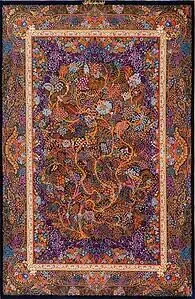
Silk rugs not only serve as beautiful additions to your home decor but can also be considered valuable investments due to their long-term appreciation. Here are some key factors to consider when purchasing a silk rug for investment purposes:
a. Design and Craftsmanship
- Look for silk rugs with intricate designs and meticulous craftsmanship, as these factors contribute to their value.
- Consider rugs with timeless patterns and motifs that have a strong demand in the market.
- Pay attention to the level of detail and precision in the rug’s weaving, as this signifies the skill and expertise of the weaver.
b. Origin and Provenance
- Persian and Oriental silk rugs are highly sought-after due to their rich history and cultural significance.
- Rugs from renowned weaving regions such as Iran, Turkey, and China are often more valuable.
- Research the rug’s origin and provenance, including the specific region or city it was produced in, as this can impact its value.
c. Condition and Age
- The condition of the silk rug plays a crucial role in its investment value.
- Vintage or antique silk rugs in well-preserved condition are generally more desirable and valuable.
- Look for rugs with minimal signs of wear, fading, or damage, as these factors can affect the rug’s longevity and value.
d. Reputable Rug Dealers
- Purchase silk rugs from reputable rug dealers who specialize in authentic, high-quality pieces.
- Seek recommendations from trusted sources, such as experts and collectors, or rug enthusiasts.
- Verify the dealer’s reputation and authenticity of their rugs through reviews, certifications, or membership in recognized rug associations.
e. Assessing Authenticity
- Familiarize yourself with the characteristics of genuine silk rugs to avoid purchasing counterfeit or machine-made imitations.
- Examine the rug’s material, knots, and weaving techniques to determine its authenticity.
- Look for subtle imperfections, irregularities, and variations in color and design, as these are indicative of handcrafted silk rugs.
Investing in silk rugs requires careful consideration of design, craftsmanship, origin, and condition. By purchasing from reputable dealers and assessing the rug’s authenticity, you can ensure that your investment holds its value and potentially appreciates over time.
Final Words: Silk Rugs at Beautiful Rugs
Silk rugs embody timeless elegance, rich history, and exquisite craftsmanship. At Beautiful Rugs, we understand the significance of silk in Persian and Oriental rugs, and our commitment is to offer you the finest selection.
From the lustrous sheen to the intricate designs, silk rugs bring a touch of luxury and sophistication to any space. We invite you to explore the world of silk rugs at Beautiful Rugs and experience their undeniable beauty firsthand.
Discover the artistry and attention to detail that goes into creating these masterpieces. Whether you’re seeking a traditional design or a contemporary interpretation, our curated collection showcases the finest silk rugs from renowned weaving regions.
Step into a world of luxury and invest in the enduring beauty of silk rugs. Visit Beautiful Rugs today and let these timeless pieces transform your home into a haven of elegance.
